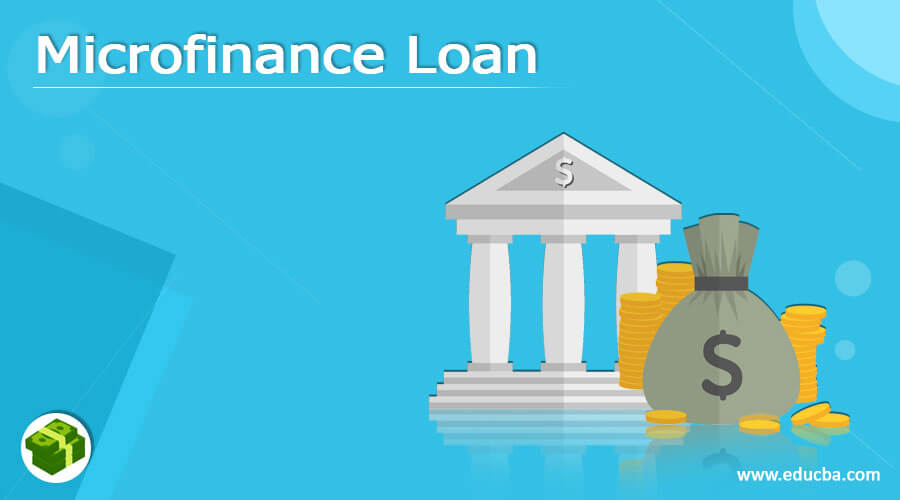
What is a Microfinance Loan?
A microfinance loan typically pertains to small-scale borrowing options that cater to self-employed individuals, startups, micro-enterprises, and small businesses with limited capital needs. These loans are characterized by their shorter terms and smaller amounts.
Low-income group families and micro-entrepreneurs, who have little to no access to financial support, are the beneficiaries of microfinance loans.
Typically, the governments of developing countries initiate these schemes to reach out to their unbanked or under-banked communities and provide them with the funding required to support their viable business ventures. Various private limited companies, Microfinance institutions (MFIs), and Non-government organizations (NGOs) are usually the lenders of microfinance loans.
Features of Microfinance Loan
Some of the main features of microfinance loans are as follows:
- The borrowers usually come from low-income backgrounds and have no financial history or very low credit scores.
- The term “micro” is used in microfinance because it refers to the small average ticket size of the loans available in this financial system.
- The tenure of this type of loan is short.
- The lenders charge interest rates on these loans relatively compared to traditional loans.
- The repayments of these loans are more frequent than conventional loans.
- The repayment amounts are slightly higher than the average repayment rates of other loans.
- In most cases, the borrowers can’t afford to provide collateral. Hence, the lenders often pool the borrowers together as a buffer, which means that the borrowers repay their debts as a group.
- The success of a microfinance program depends on the contribution of the pool’s members (or borrowers), which creates peer pressure that eventually ensures the timely repayment of the entire loan.
How to Apply for a Microfinance Loan?
To avail of a microfinance loan, an applicant needs to adhere to the following steps:
- Visit the official website of the preferred microfinance lender, complete the application form for the loan, and submit all the required documents.
- After the submission, one of the lender’s representatives will contact the applicant to complete the remaining loan formalities.
- Once the representative is satisfied with all the documents submitted by the applicant, the lender will disburse the loan amount to the applicant’s designated bank account.
The applicants seeking money under microfinance programs should first apply for loans from banks (private or public) or Non-banking financial companies (NBFCs), as the interest rates they charge are relatively lower than the MFIs. The high-interest rates are because the candidates applying for microfinance loans usually have no financial history or very low credit scores.
Microfinance Loan Eligibility Criteria
To be eligible for a microfinance loan, an applicant must fulfill the following required criteria:
- Shouldn’t have availed a loan from any other microfinance lender
- Shouldn’t have any pending outstanding loan exceeding a certain limit, which depends on the law of the land
- Should be a working professional with a steady flow of income
- Should have all the required documents at the time of application
- Should have an account in the bank in their name
Documents Required for Microfinance Loan
An applicant is required to submit the following documents to avail of a microfinance loan:
- Fully completed loan application form
- An excellent business proposal for SMEs or a letter of application for self-employed individuals
- A valid document for personal identification, such as a national ID card, driver’s license, international passport, etc.
- Photocopies of recent utility bills
- Recent passport-sized photographs
- Proof of business location
- Photocopies of Article of Association (AoA), Memorandum of Association (MoA), or Partnership deed certified by an authorized official
- Detailed track record of repayment along with bank account statement for the last six months
- Audited financial statements for the preceding two years
- Income tax return filing of the partners or directors for the preceding two years
- Pro forma invoice of the equipment to be financed with the loan
Benefits of Microfinance Loan
According to the Consultative Group to Assist the Poor (CGAP), more than 120 million people have been directly aided by microfinance loans since 2021. Further, the benefits of these microfinance loans are not limited to the direct impact of providing a source of capital to the borrowers but go way beyond that. These small entrepreneurs create successful businesses, which in turn create more jobs and employment that aid the overall economic upliftment of a community. The World Bank estimates that more than 500 million people have been directly or indirectly beneficiaries of these microfinance-related operations as of 2020.
Key Takeaways
Some of the key takeaways of the article are:
- Microfinance loans refer to short-term loans extended to low-income individuals or groups or small entrepreneurs with limited to no financial support.
- It allows people from the economically weaker sections to start reasonable businesses and improve the overall economic condition of their communities.
- Most of the microfinancing operations occur in developing countries in Asia and Africa.
- Compared to traditional loans, lenders charge relatively higher interest rates and assign more frequent repayments in the case of microfinance loans.
- According to the World Bank, more than 500 million people have been direct or indirect beneficiaries of microfinance-related operations as of 2020.
Conclusion
So, there is no doubt that a microfinance loan is an essential financial tool to improve the economic conditions of individuals and groups with limited to no meaningful access to financial support. Any interested in these loans must furnish the required documents and a good business proposal.
Recommended Articles
This is a guide to Microfinance loans. We also discuss applying for a Microfinance Loan with features, eligibility criteria, documents requirements, and benefits. You may also have a look at the following articles to learn more –

